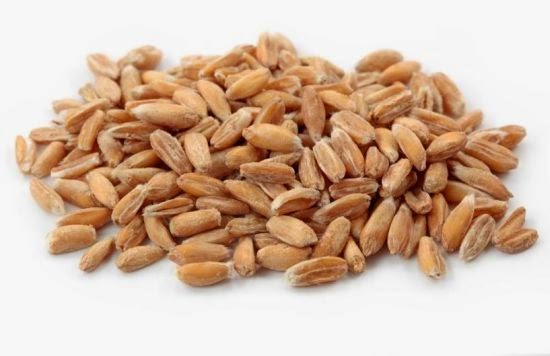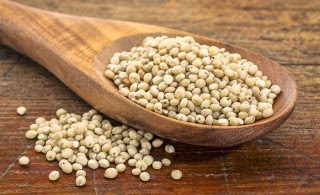A Lot has been said about the value of sorghum (dawa) to diabetics, ignoring even more pertinent health benefits. Those health benefits are what I hope to dwell on today.
(adsbygoogle = window.adsbygoogle || []).push({});
Nutritional Value of Sorghum
Sorghum is a powerhouse in terms of nutrients,and can provide those wise individuals who add it to their diet with vitamins like niacin, riboflavin, and thiamin, as well as high levels of magnesium, iron, copper, calcium, phosphorous, and potassium, as well as nearly half the daily required intake of protein and a very significant amount of dietary fiber (48% of the recommended intake).
Digestive Health:
It seems like many healthy foods contain some amount of dietary fiber, which greatly improves the functionality of the digestive system. However, sorghum is one of the best foods out there for dietary fiber. A single serving of sorghum contains 48% of your daily recommended intake of dietary fiber, more than 12 grams! That means that your digestive tract will keep your food moving along rapidly, preventing things like cramping, bloating, constipation, stomach aches, excess gas, and diarrhea. Furthermore, excess amounts of fiber in the body helps to scrape off dangerous cholesterol (LDL), which helps to improve heart health and protect your body from conditions like atherosclerosis, heart attacks, and strokes.
Cancer Prevention:
The bran layer of thesorghum grains contain important antioxidantsthat are not found in many other types of food. These antioxidants have been directly connected to a reduced chance of developing various types of cancer, including esophageal cancer, particularly in comparison to people who regularly eat wheat and corn. Antioxidants are the beneficial compounds that neutralize and eliminate free radicals in the body, which often cause healthy cells in the body to mutate into cancer cells.Elements found in sorghum called 3-Deoxyanthoxyanins (3-DXA) are discovered to have strong anti proliferative properties and can act against colon cancer cells as per the study and research conducted by scientists at the University of Missouri.
Diabetes Control:
Excessive carbohydrates break down into simple sugars and wreak havoc on the glucose levels in the body, leading todiabetes, or causing chaos for those people who already suffer from this disease. However, the tannin-rich bran of sorghum actually has enzymes that inhibit the absorption of starch by the body, which can help to regulate insulin and glucose levels in the body. By keeping these levels balanced, diabetics won’t suffer as many plunges and spikes in their glucose levels, thereby preventing diabetic shock and other health complications.Sorghum flour is rich in phytochemical components, including tannins, phenolic acids, anthocyanins, phytosterols, and policosanols, with a potential to benefit human health. These phytochemicals have gained increased interest due to their antioxidant activities, cholesterol-lowering properties, and anticarcinogenic and antidiabetic effects.
Celiac Disease:
Although it is a relatively “new” condition, it seems to be gaining awareness all around the world.Celiac diseaseis a severe allergy to gluten, which is primarily found in wheat-based products. Surprisingly, wheat/gluten is found in thousands of normal food items, making life for those suffering from Celiac disease very difficult. Fortunately, alternative grains and grasses, such as sorghum, can be eaten safely by those suffering from this increasingly common condition, without the painful inflammation, nausea, and gastrointestinal damage that gluten causes.
Bone Health:
Magnesium is found in high quantities in sorghum, which means that your calcium levels will be properly maintained, as magnesium increases calcium absorption in the body. Thesetwo mineralsare also integral to the development of bone tissue and speeds up the healing of damaged or aging bones. This can prevent conditions like osteoporosis and arthritis, thereby keeping you active and healthy well into your old age.
Circulation and Red Blood Cell Development:
Copper and Ironare also found in sorghum, and in a similar way as magnesium and calcium, copper helps to increase the uptake and absorption of iron into the body. This means a decreased likelihood of developing anemia, which is another name for iron deficiency. With enough iron and copper in your system, red blood cell development is increased, thereby boosting circulation of the blood, stimulating cellular growth and repair, and increasing the hair growth of the scalp, while also boosting energy levels throughout the body. A single serving of sorghum contains 58% of your daily recommended intake of copper.
Energy Levels:
Niacin, also known as vitamin B6, is a key component in transforming food into usable energy and fuel for the body. Breaking down and metabolizing nutrients into energy will keep your energy levels stable throughout the day, rather than the cheap peaks and troughs that sugar boosts give you. Sorghum contains 28% of your recommended niacin intake per day.
Gluten-free Diet:
Sorghum is gluten free and turns out to be helpful for those who are suffering from wheat allergies and celiac disease. It is also instrumental in offering strength to bones and keep teeth healthy by giving them energy.
Caution:
There are no known concerns or cautions against adding sorghum to your diet. As it is a grass, there is the possibility of some people being allergic to it, but the cases of sorghum being allergenic are very rare. Furthermore, with the high content of certain minerals and vitamins, the only real danger is getting too much of a good thing, so eat sorghum in moderation and enjoy all of the wonderful health benefits. Excessive of sorghum may lead to pilling up of weight and it is not a safe sugar replacement for diabetics. It should only be used occasionally and other healthy foods must be consumed to round out the suggested regular intake of calcium, iron, potassium and other necessary nutrients.




